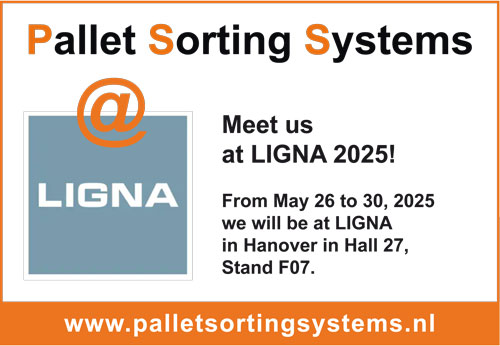The Colruyt in Hamme: efficient pallet management in the DC with the pallet sorting line from PSS

The Colruyt in Hamme: efficient pallet management in the DC with PSS pallet sorting line
The Colruyt in Hamme, Belgium, recently invested in a second pallet sorting line from Pallet Sorting Systems (PSS). This state-of-the-art machine is designed to further optimize the logistics processes in their distribution center (DC) and perfectly matches their need for efficient pallet management.
Key features of the pallet sorting line:
1. Suitable for different pallet types and sizes
The sorting line handles both Europallets, IPP, LPR and Chep pallets in formats 800×1200 mm and 1000×1200 mm. The machine can sort these different pallet types simultaneously, offering maximum flexibility.
2. High sorting capacity.
The machine sorts more than 800 pallets per hour in as many as 16 different categories, including distinctions in:
- Type of pallet: Euro, IPP, LPR, Chep
- State of the pallet: whole or in need of repair
3. Efficiency in pallet management
With this second sorting line, Colruyt sorts pallets they use themselves in their DC. Pallets to be repaired are immediately separated and sent to an external pallet repairer, who repairs them and returns them to Colruyt.
4. Reliability and continuity
The machines have been running 24/7 since the first installation in 2014. Maintenance is carried out entirely by Colruyt’s internal technical department, ensuring reliable and long-term operation.
5. Advanced Scada system
Both sorting lines are equipped with a Scada system, which generates a sorting report per shift and makes it available in a CSV file. This provides valuable insights into the performance of the sorting process.
Why did Colruyt choose PSS?
The investment in a second PSS sorting line underlines Colruyt’s confidence in the quality and performance of these machines. Sorting pallets directly in the DC speeds up logistics processes and increases efficiency. At the same time, the modular structure of the sorting line guarantees flexibility and adaptability for future needs.
With this new installation, Colruyt strengthens their position as a pioneer in efficient pallet management within their sector. Contact Pallet Sorting Systems for more information on how our solutions can improve your logistics processes.






